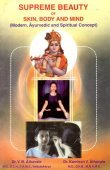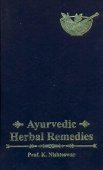Lekhaniya, Lekhanīya: 12 definitions
Introduction:
Lekhaniya means something in Hinduism, Sanskrit, Buddhism, Pali, Marathi, Hindi. If you want to know the exact meaning, history, etymology or English translation of this term then check out the descriptions on this page. Add your comment or reference to a book if you want to contribute to this summary article.
In Hinduism
Ayurveda (science of life)
Source: Wisdom Library: Āyurveda and botanyLekhanīya (लेखनीय) is the Sanskrit name for a group of medicinal plants, classified as “thinning the tissues or reducing corpulency”, and originally composed by Caraka in his Carakasaṃhitā sūtrasthāna IV. The name is derived from the word lekha, translating to “line” or “stroke”. It is a technical term used throughout Āyurveda. Examples of plants pertaining to this category include Musta (Cyperus rotandus), Kuṣṭha (Aplotaxis auriculata), Haridrā (Curcuma longa) and Dāruharidrā (Berberis asiatica). The collection of herbs named Lekhanīya is one of the fifty Mahākaṣāya.
Source: gurumukhi.ru: Ayurveda glossary of termsLekhanīya (लेखनीय):—Scrapping, Scratching, Substances that reduce excess body tissues.

Āyurveda (आयुर्वेद, ayurveda) is a branch of Indian science dealing with medicine, herbalism, taxology, anatomy, surgery, alchemy and related topics. Traditional practice of Āyurveda in ancient India dates back to at least the first millenium BC. Literature is commonly written in Sanskrit using various poetic metres.
Languages of India and abroad
Marathi-English dictionary
Source: DDSA: The Molesworth Marathi and English Dictionarylēkhanīya (लेखनीय).—a S (Proper, fit, suitable) to be written.
Marathi is an Indo-European language having over 70 million native speakers people in (predominantly) Maharashtra India. Marathi, like many other Indo-Aryan languages, evolved from early forms of Prakrit, which itself is a subset of Sanskrit, one of the most ancient languages of the world.
Sanskrit dictionary
Source: DDSA: The practical Sanskrit-English dictionaryLekhanīya (लेखनीय).—a.
1) To be written, drawn or painted.
2) useful for reducing corpulency.
-yam An accusation or defence (required to be made in writing).
Source: Cologne Digital Sanskrit Dictionaries: Shabda-Sagara Sanskrit-English DictionaryLekhanīya (लेखनीय).—mfn.
(-yaḥ-yā-yaṃ) To be written. n.
(-yaṃ) An accusation or defence in law, which are required to be given in writing. E. likh to write, anīyar aff.
Source: Cologne Digital Sanskrit Dictionaries: Cappeller Sanskrit-English DictionaryLekhanīya (लेखनीय).—[adjective] to be painted or written down.
Source: Cologne Digital Sanskrit Dictionaries: Monier-Williams Sanskrit-English Dictionary1) Lekhanīya (लेखनीय):—[from likh] mfn. to be written or drawn or painted, [Yājñavalkya [Scholiast or Commentator]]
2) [v.s. ...] useful as a remedy for reducing corpulency or for scarifying, [Suśruta; Caraka]
3) [v.s. ...] n. (in law) an accusation or defence (required to be made in writing), [Horace H. Wilson]
Source: Cologne Digital Sanskrit Dictionaries: Yates Sanskrit-English DictionaryLekhanīya (लेखनीय):—[(yaḥ-yā-yaṃ) a.] That should be written. n. Plaint; defence.
[Sanskrit to German]
Sanskrit, also spelled संस्कृतम् (saṃskṛtam), is an ancient language of India commonly seen as the grandmother of the Indo-European language family (even English!). Closely allied with Prakrit and Pali, Sanskrit is more exhaustive in both grammar and terms and has the most extensive collection of literature in the world, greatly surpassing its sister-languages Greek and Latin.
Hindi dictionary
Source: DDSA: A practical Hindi-English dictionaryLekhanīya (लेखनीय):—(a) worth writing, fit to be written; hence ~[tā] (nf).
...
Nepali dictionary
Source: unoes: Nepali-English DictionaryLekhanīya (लेखनीय):—adj. worth-writing/recording; fit to be written/recorded;
Nepali is the primary language of the Nepalese people counting almost 20 million native speakers. The country of Nepal is situated in the Himalaya mountain range to the north of India.
See also (Relevant definitions)
Query error!
Full-text: Lekhya, Lekhneey, Haridra, Kusta, Mahakashaya.
Relevant text
Search found 10 books and stories containing Lekhaniya, Ikha-aniya, Ikha-anīya, Lekhanīya, Lēkhanīya; (plurals include: Lekhaniyas, aniyas, anīyas, Lekhanīyas, Lēkhanīyas). You can also click to the full overview containing English textual excerpts. Below are direct links for the most relevant articles:
Manusmriti with the Commentary of Medhatithi (by Ganganatha Jha)
Verse 8.317 < [Section XLIII - Theft (steya)]
Efficacy of herbomineral compounds in managing Yakṛt Roga. < [Volume 34 (issue 4), Apr-Jun 2015]
Pharmaco – therapeutics of dasemani drugs < [Volume 3 (issue 3), Jan-Mar 1984]
Role of indigenous herbs in the management of Alzheimer's disease < [Volume 34 (issue 1), Jul-Sep 2014]
International Ayurvedic Medical Journal
A review study on the efficacy of lekhaniya mahakashaya in the management of sthaulya (obesity) < [2023, Issue 07, July]
A clinical study of gomutra bhavita lekhaniya mahakashaya in the management of obesity < [2017, Issue III March,]
A comparative study on lekhaniya mahakashaya ghan vati and mustadi ghan vati in the management of dyslipidemia < [2022, Issue 4, April]
AYU (Journal of Research in Ayurveda)
Clinical evaluation of Lekhaniya Kashaya Vasti in the management of Sthaulya (obesity) < [Volume 35 (1); 2014 (Jan-Mar)]
Medohara and Lekhaniya dravyas (anti-obesity and hypolipidemic drugs) in Ayurvedic classics: A critical review < [Volume 34 (1); 2013 (Jan-Mar)]
Comparative evaluation of turmeric gel with 2% chlorhexidine gluconate gel for treatment of plaque induced gingivitis: A randomized controlled clinical trial < [Volume 36 (2); 2015 (Apr-Jun)]
Trial of Arogya Vardhini Vati and Lekhaniya Mahakashaya for obesity. < [Volume 5, Issue 4: July - August 2018]
Study comparing lekhniya mahakashay and sarwang swedan for obesity. < [Volume 5, Issue 2: March - April 2018]
Efficacy of Ayurvedic Formulations in Dyslipidemia (Medo Dusti) < [Volume 10, Suppl 4: July-August 2023]
World Journal of Pharmaceutical Research
Hyperlipidemia as a Causative Factor of Dhamanipratichaya: A Review < [2020: Volume 9, March issue 3]
Ayurvedic management of cellulitis with jalauka vacharan < [2022: Volume 11, October issue 13]
A Case Study on Managing Obesity (Sthoulya) Through Ayurveda < [2022: Volume 11, October issue 13]
Related products

